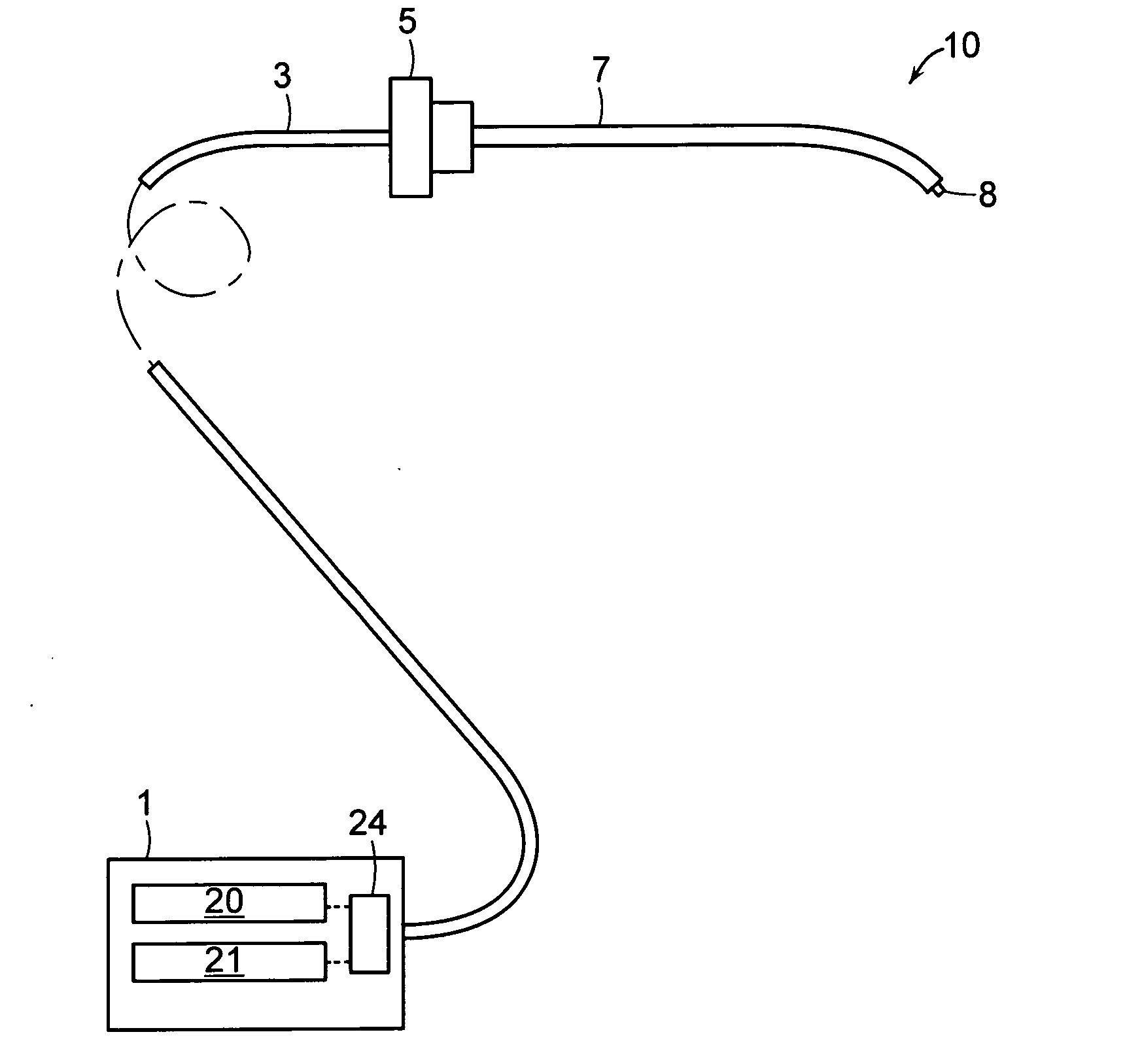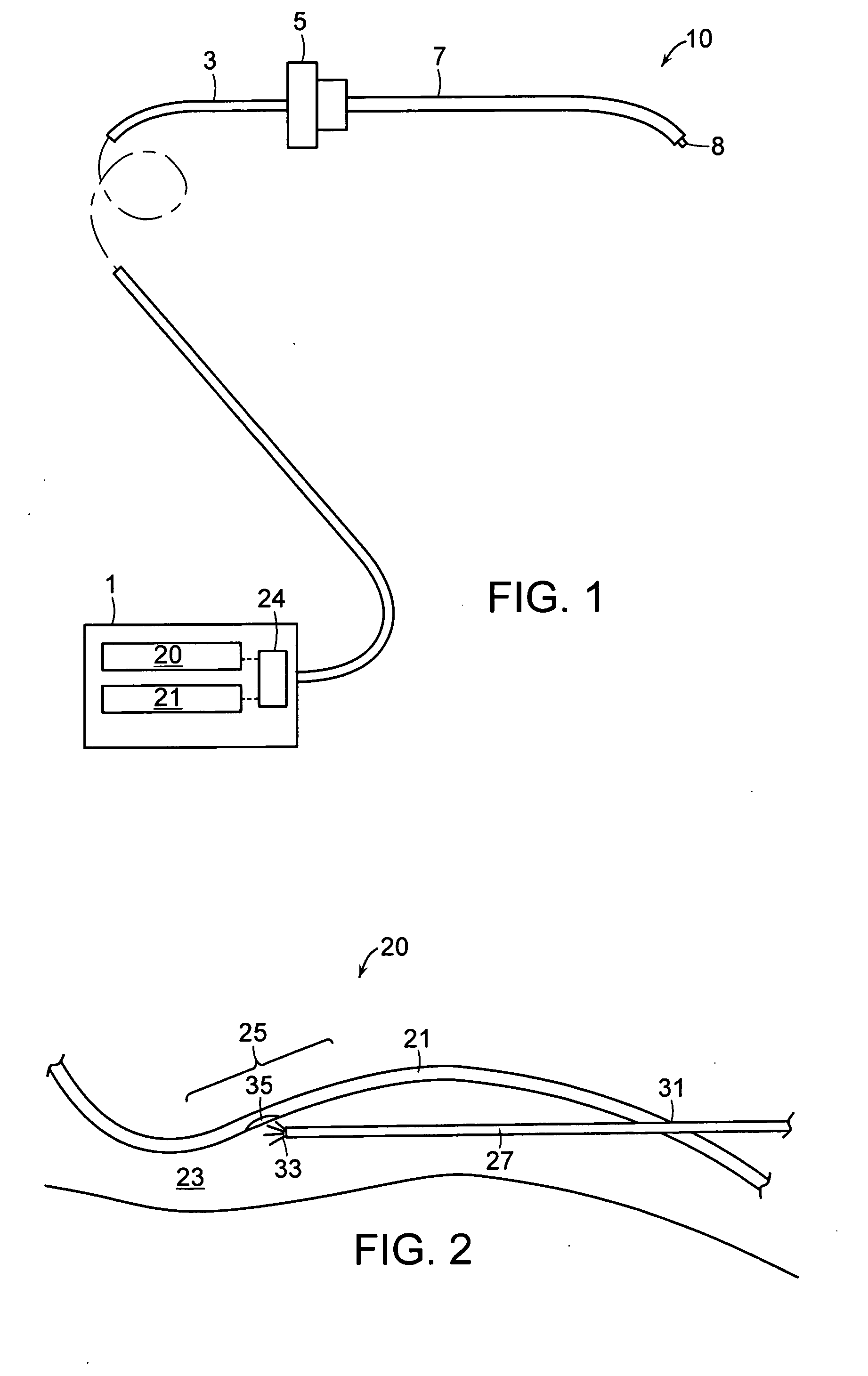System and method for laser lipolysis
- Summary
- Abstract
- Description
- Claims
- Application Information
AI Technical Summary
Benefits of technology
Problems solved by technology
Method used
Image
Examples
Embodiment Construction
[0022] A description of preferred embodiments of the invention follows. With reference initially to FIG. 1, the device comprises a laser source 1 coupled to an optical fiber 3. The fiber 3 connects to a hollow cannula 7, and extends through the interior of the cannula 7, terminating at or near the cannula tip. Preferably, the proximal end of the fiber 3 protrudes out from the tip of the cannula 7 by approximately 1-2 mm. The fiber 3 can be connected to the cannula 7 using any conventional means, such as a Touhy-Borst connector 5, which holds the fiber tight within the cannula. In operation, laser energy from the source 1 is coupled into the fiber 3, and is conveyed along the length of the fiber to the cannula tip. The laser energy can thus be directed from the end of the fiber to a treatment site by controlling the location and orientation of the cannula tip.
[0023] The cannula 7 is a thin, needle-like structure, that is preferably made from stainless-steel. Generally, the cannula h...
PUM
 Login to View More
Login to View More Abstract
Description
Claims
Application Information
 Login to View More
Login to View More - R&D
- Intellectual Property
- Life Sciences
- Materials
- Tech Scout
- Unparalleled Data Quality
- Higher Quality Content
- 60% Fewer Hallucinations
Browse by: Latest US Patents, China's latest patents, Technical Efficacy Thesaurus, Application Domain, Technology Topic, Popular Technical Reports.
© 2025 PatSnap. All rights reserved.Legal|Privacy policy|Modern Slavery Act Transparency Statement|Sitemap|About US| Contact US: help@patsnap.com



